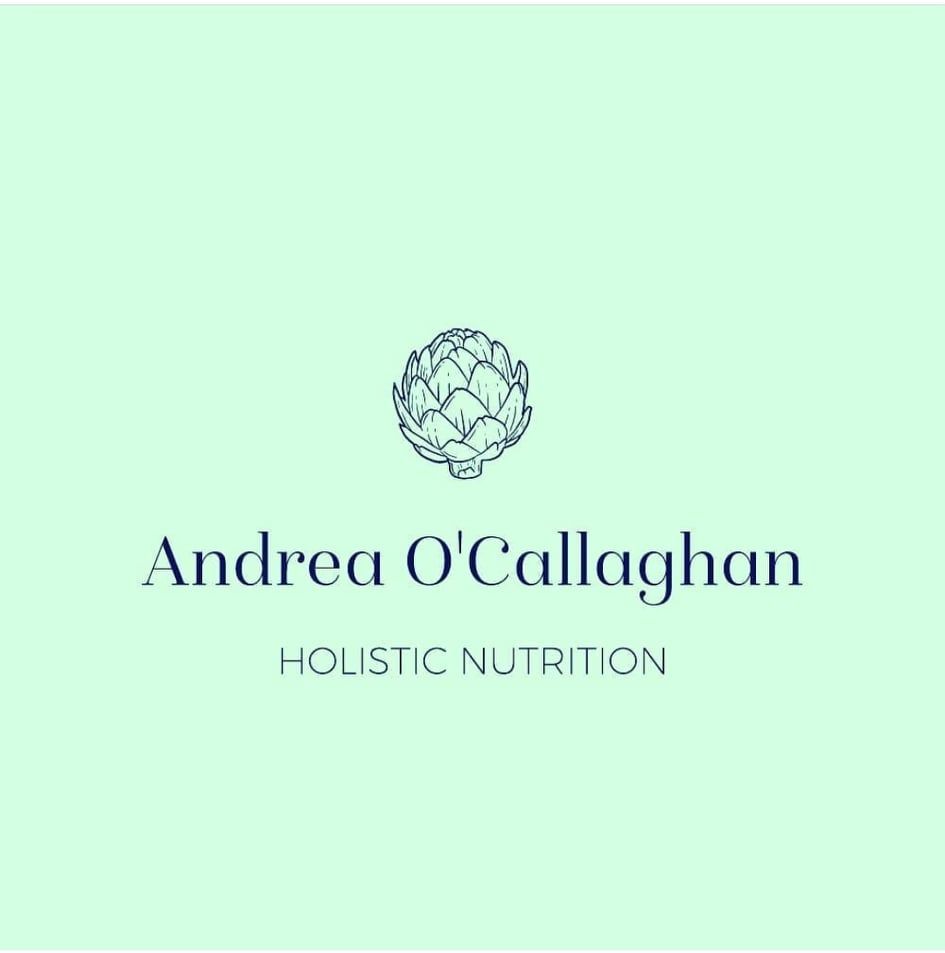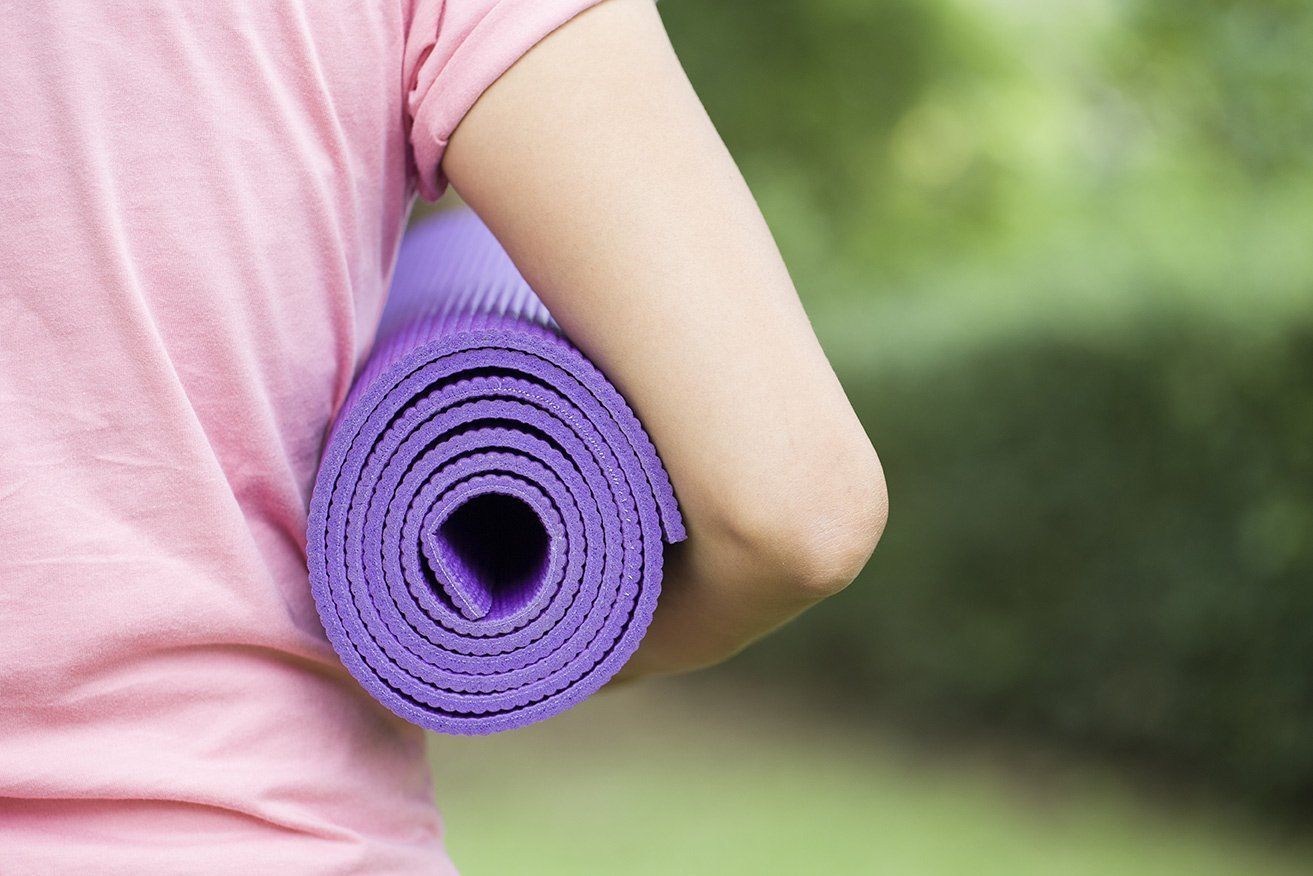BLOG
Connect with me, learn about helpful tips and tricks and so much more!
Use the search bar to search for different blog topics.

The formula is simple: Diverse diet = Diverse microbes = Good health . That is all we have to do help improve our gut health. The problem is we do not have a diverse diet. I remember when I used to eat the same thing for breakfast EVERY DAY when I was in high school, for example (we won't dwell too long on the fact that it was cinnamon sugar toast) . Even as I got more health conscious and upgraded my breakfasts to include smoothies, I would make a smoothie every morning! Definitely an improvement over cinnamon sugar toast, but the same thing every day is not ideal, either. This is not just about a processed diet vs whole food diet. Yes, a processed food diet is bad for our good microb es, but a whole food diet that is not diverse can also be problematic for the diversity of our gut. Most of us consume no more than 15 different foods in a week. This is not diversity, even if we hit all the food groups. Then there are those who choose to el iminate food groups such as grains and legumes. T his is taking out a range of substantial foods that will feed many beneficial bacterial species. And believe it or not, there are still people – adult people – who refuse to eat vegetables, and they are prou d of it. Again, vegetables represent all kinds of foods that will feed a lot of different species. This is just basic diversity, and it gets more complicated. So not only do we all need to be more adventurous and try to eat different foods, we need to eat d ifferent varieties of the same food. This is one of biggest changes we have had in our diets that make us different from our ancestors. They ate a greater variety of foods than we eat today, and they grew different varieties of the same food. This was g ood for the soil, it helped protect them against potential crop loss, and it increased the nutrients available to them in their diet. J ust like with money, it is important to diversify. Today, agriculture does not function that way. Farmers grow few crop types, and seldo m do they grow more than one variety of the same crop. There are over 6000 varieties of tomatoes – each one has different properties and a different nutrient composition!! We are missing out on a lot. And while we cannot possibly consume 6000 different vari eties, we can expand our repertoire, especially in the summer, and seek out as many varieties as we can find. Heirloom varieties are something I get really excited about when it comes to growing things in my own garden. So while researchers continue to unravel the mystery of our gut and figure out what we should feed it, specifically for specific benefits, we can d o more to increase the diversity and build a stronger gut by eating new foods. This week, buy three new foods you do not eat regularly. They can be foods you have never had or foods you like but for some reason never buy. Here are a few things you can do t o diversify: Buy yellow or rainbow beets instead of red beets. Choose purple or white carrots instead of orange. Look for heritage varieties and buy them when you find them. Go to farmer’s markets and talk to the local farmers. Generally, these are the farmers who still grow a variety of crops. Let them know you are interested in trying different varieties of tomatoes or potatoes etc. Shop at ethnic stores and look for new grains and legumes. Go to ethnic restaurants - this way someone else can prepare the foods for you. Think of the fun and adventure you can have – you and your microbes will be happier!! Reference: Mark L. Heiman, Frank L. Green way. A healthy gastrointestinal microbiome is dependent on dietary diversity. Molecular Metabolism, 2016; DOI: 10.1016/j.molmet.2016.02.005
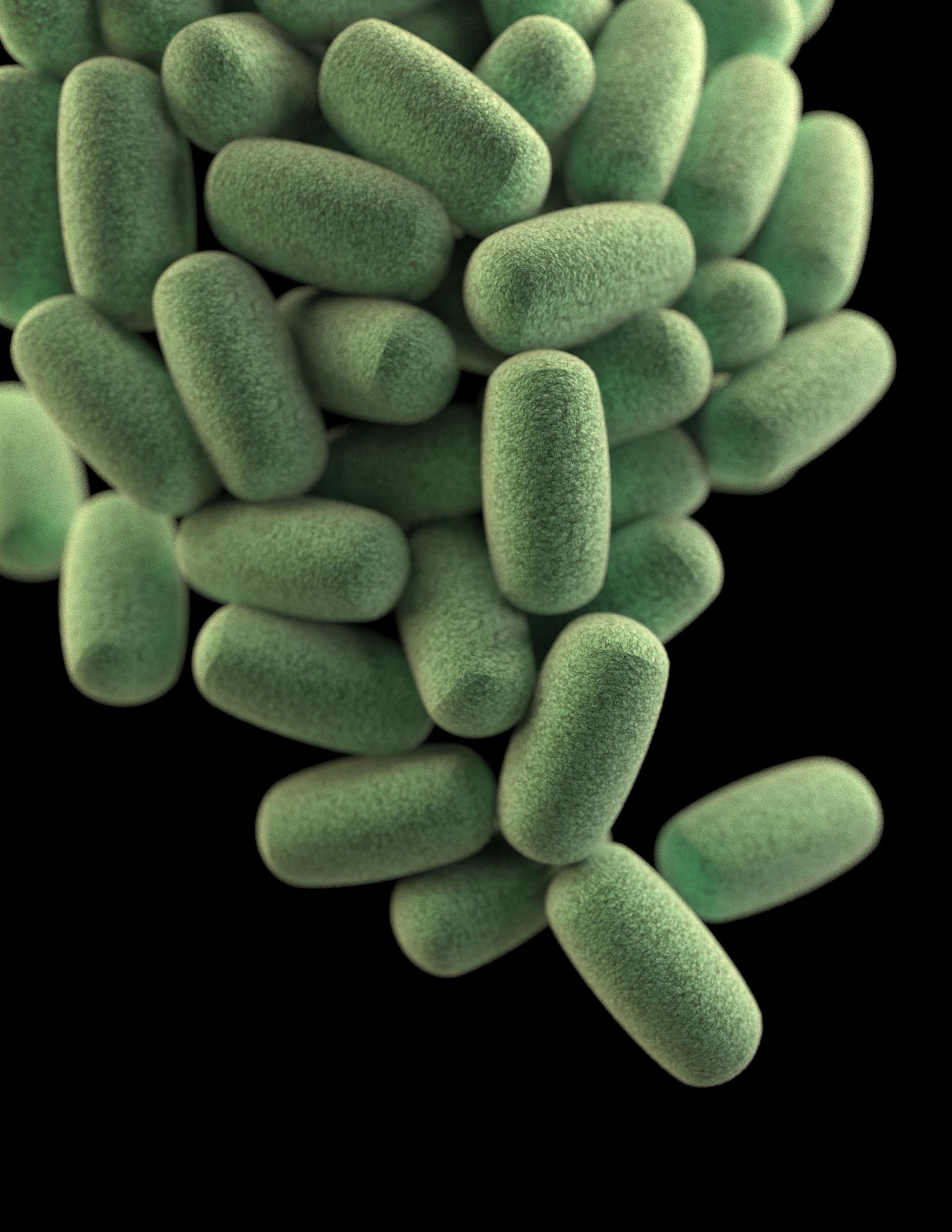
Would it surprise you to know that you are more bacteria than you are human cells? You have anywhere from 1.3 to 10 times more bacteria than cells in your body. Having a range like that may seem confusing, but that is just the way it is. We are in the frontier days when it comes to knowledge about the bacteria in our body and what it does for us. Most people are afraid of bacteria, not knowing that the majority of it is called “good bacteria,” playing many beneficial roles in and on our body to keep us healthy. There is, of course, bad bacteria, but 85 percent of the bacteria in a healthy body is the good kind. They keep the bad guys in check and, in turn, the bad guys give the good bacteria a workout. This workout keeps our good bacteria in top shape to perform the many functions necessary for our wellness, the main ones being: Help with digestion of all foods – having food allergies, sensitivities and intolerances are directly caused by a lack of good bacteria. Don’t blame the food – fix the gut! Break down normally non-digestible components of food, such as dietary fiber, into molecules that the body can use for fuel. Helps eliminate waste materials, preventing both constipation and diarrhea. A healthy gut microbiota has been shown to help coordinate the contractions of the intestinal walls, helping move food through the gut at a healthy rate. Works synergistically with fiber and phytochemicals in foods to ensure proper absorption of nutrients. Protects the intestinal gut lining and defends against bad bacteria and other pathogens. Regulates inflammation. Helps with mood disorders such as depression and anxiety. Helps regulate weight and prevent obesity. Boosts immune system function. Communicates directly with the brain as part of the brain-gut connection and produces important neurotransmitters. Helps regulate blood sugar, insulin levels, blood pressure and cholesterol. Supports the function of the liver and kidneys. Prevents infections throughout the body. Potentiates phytochemicals in foods to be more powerful. Deactivates any potentially harmful chemicals found in food. Helps detox out heavy metals and other toxins before they enter the body, saving the liver some work. Let's look at some of these in more detail..... Your Gut Health Affects Nutrient Absorption Fascinatingly, some species of gut bacteria are better at converting non-digestible food to fuel than others. This means that, depending on the species of bacteria living in their intestines, people extract a different number of calories from the food they eat! Studies indicate that individuals with unhealthy gut bacteria end up absorbing hundreds of calories more than people with healthy bacteria, from the same exact meal. Such studies indicate that having good gut health can help you maintain a healthy energy balance, avoid weight gain, or lose weight. A Healthy Gut Protects You from Infections, Potentiates vaccinations Since the gut microbiota never comes into contact with bacteria living anywhere but the intestines, scientists were surprised to discover that a healthy gut microbiota also helps kill off infections in the rest of the body. Studies now show that this is because healthy gut microbes are able to boost the function of the entire immune system. Multiple studies have shown that a healthy gut microbiota increases the total number of white blood cells available to surveil your body for intruders. Moreover, recent studies show that healthy gut bacteria also increase the ability of immune cells to kill their targets. A greater number of deadlier white blood cells provides a serious boost in immune function! In fact, evidence suggests that a healthy gut microbiota can increase your ability to fight off everything from a simple sinus infection or yeast infection to a life-threatening infection, like pneumonia. A healthy gut microbiota may even boost your immune system enough to make vaccinations from your doctor more effective. Vaccines work by introducing a part of a dangerous bacteria or virus to your immune system so that it can recognize the whole bacteria or virus if it comes across it later. A healthy microbiota boosts the ability of white blood cells to find and memorize these pieces, improving how well the vaccine can protect you. This has been proven for specific vaccines, such as the flu vaccine, but future studies may show that this effect is common for most vaccines. A Healthy Gut Prevents Systemic Inflammation I have mentioned that there is evidence that a healthy gut prevents systemic inflammation. Systemic inflammation describes a state where the immune system produces the chemicals it uses to fight an infection even though there isn’t an infection. The immune system releases these “inflammatory mediators” in response to signals you would have if you DID have an infection, such as high blood sugar or cholesterol. (These imbalances can occur as a result of a less-than-optimal diet or high stress, for example.) The inflammatory chemicals would be efficient to damage the agents of infection and clear away the destruction an infection would create. If there is no acute (short-term) infection, and the signals like high blood sugar or cholesterol persist (becoming chronic, or long-term), the inflammatory chemicals turn against us and cause our own cells and systems to break down. Over long periods of time, damage to your healthy cells from the release of inflammatory chemicals can lead to many of our most common chronic diseases, including: obesity, type 2 diabetes and cancer. We have a huge component of our immune system in our guts. Good gut bacteria produce specific kinds of sugar complexes that can enter the intestinal wall and activate a group of our immune system’s white blood cells called T-regulatory cells, or T reg for short. Activated T reg cells send calming signals to the body, which reduces the inflammatory response that has the potential to cause so much harm. In the end, though, we want to remove the CAUSE of the inflammation so our bodies don’t have to continually do damage-control….more on inflammation in another post! Autoimmune Diseases Evidence suggests that a healthy gut microbiota can alleviate the symptoms of an autoimmune disease. This is due to the ability of healthy gut microbes to activate the T reg cells mentioned above. T reg cells can “turn off” immune cells that are attacking your own cells, helping slow down the damage to your tissues and organs. Gut bacteria and mental health The human gut is lined with more than 100 million nerve cells, more than in the spinal cord or in the peripheral nervous system. Yes, we have brain cells in our large intestines! This explains why antibiotics which disturb the gut microbial ecosystem might cause neuropsychiatric effects, interact with psychotropic medications, and/or influence our mood. This also explains why mood disorders are so prevalent in patients with irritable bowel syndrome. Patients with psychiatric disorders have different populations of gut microbes compared to microbes in healthy individuals. Chemicals implicated in depression and happiness such as serotonin are also found in the gut; 90 percent of serotonin is manufactured in the digestive tract and not the brain! (Many antidepressants work by increasing serotonin.) Gut microbes transform fiber into short-chain fatty acids (SCFAs). The levels of these SCFAs are communicated to the cells that produce serotonin, affecting how much serotonin is released. Scientists have found that gut bacteria produce many other neurotransmitters such as dopamine, norepinephrine, acetylcholine, and GABA, which are critical for mood, anxiety, concentration, reward, and motivation. The gut microbiome can also cause changes in how our brains react to these chemicals. Exposure and consumption of good bacteria are necessary for a balanced brain. Studies found that in germ-free sterile mice, there is an imbalance of brain chemicals in areas important for emotions and mood. Also, there are significantly more inflammatory chemicals in the brains and bodies of depressed people compared to non-depressed ones. This effect on the inflammatory system may be related to a dysfunctional gut microbiome in depressed individuals. Also, stress makes us more likely to develop mood disorders. And stress makes the gut more prone to bacterial imbalance. Stress and stress hormones such as cortisol can have a negative impact on our microbiome. Reciprocally, depression causes dysbiosis. A strong microbiome can make us more resilient to depressive states after stressors or trauma. It is not surprising that chronic exposure to stress is associated with a higher incidence of depression, anxiety, and PTSD. But not everyone who faces stress develops a mood disorder, and not everyone who experiences a trauma develops PTSD. Scientific studies about resiliency, the ability to recover quickly from difficulties, are showing that it may be a function of what bacteria lives or does not live in your gut. How can gut bacteria affect higher functions in the brain?. One way that has already been mentioned above is that gut bacteria produce neurotransmitters that are important for behaviors, mood, thoughts and other cognitive abilities. Also, some microbiota can change how these brain chemicals get metabolized in the body and thus determine how much is available for action in blood circulation. Other chemicals generated by gut bacteria are themselves neuroactive, such as butyrate, which has been shown to reduce anxiety and depression. Another pathway is the vagus nerve, which is one conduit for the bidirectional gut-brain communication. The immune system is yet another one. The immune system is intimately connected to the gut microbiome and the nervous system, and thus can be a mediator of the gut’s effects on the brain and the brain’s effects on the gut. What all of the above findings strongly suggest is this: Take care of your gut bacteria for good quality of life, better immunity and mental health, and a sharper brain. But HOW can we do this?? There are many things you can do to improve your microbiome health, but learning about the key foods that will support your efforts is the best place to start. Stay tuned for more on this topic to come.
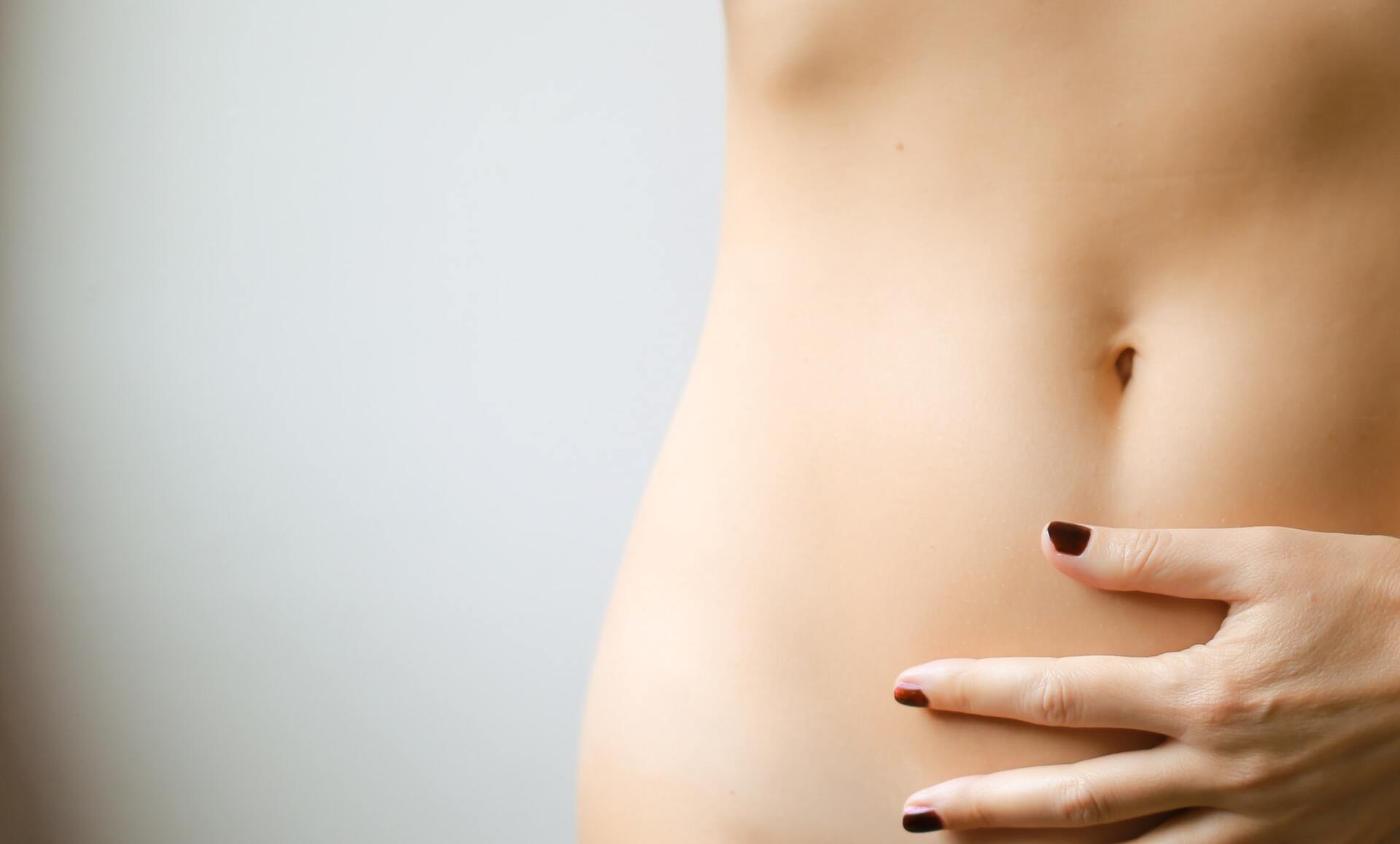
The foundation of ALL health...now that is a pretty big statement to make, but it is a true one! First of all, what exactly is the gut? The gut is the whole digestive tract from the mouth to the anus, and it includes all the organs of digestion like the liver, pancreas and gallbladder. Your digestive system is a sophisticated boundary between you and the outside world. It allows you to break down and absorb all the nutrients you need from food while making sure toxins, poisons, dangerous bacteria, and viruses stay out. The gut plays countless roles in our day to day functioning, but some of the major ones are as follows. 1. Your Gut Health Affects Nutrient Absorption Contrary to the common-sense notion that what you eat determines what nutrients are available to your body, evidence now shows that the condition of your gut determines how well you absorb nutrients from your food. Multiple studies show that your gut health helps prevent nutrient deficiencies by many different mechanisms, including: producing vitamins directly in the intestines for you to absorb, including vitamin K and the B-vitamins producing fuel for the cells lining the intestines to keep them absorbing nutrients at full capacity communicating with the cells lining the intestines when and when not to grow and divide and to keep the lining of the wall at the right thickness for optimal nutrient absorption 2. Your Gut Health Affects Your Toilet Habits Having good gut health influences your toilet habits. Strong, healthy muscles in the walls of the intestines are able to contract more efficiently, pushing food through the intestines more quickly. Regular bowel movements are vital to protecting your overall health. Not only do they prevent the pain and bloating associated with constipation, they dramatically reduce your risk of developing two serious conditions: hernias — straining to pass the hard, dry stools caused by irregular bowel movements puts you at serious risk for developing a hernia. A hernia occurs when an intestine or other organ pushes through the wall of your abdomen or diaphragm. This is not only debilitatingly painful but may also become life-threatening. colon cancer — though occasional constipation likely has little effect, having irregular bowel movements for extended periods of time puts you at greater risk for certain types of cancer. This is because bowel movements are responsible for removing toxins and digestive fluids from your body. If you are not having regular bowel movements, these toxins stay in your body, potentially promoting cancer. Perhaps the most important cancer-causing molecules that build up in your intestines if you are constipated are bile acids. While you are supposed to have moderate amounts of bile acids in your intestines to help digest and absorb fat, high concentrations can damage your DNA, promoting cancer. Many studies show that when bile acids build up in the digestive tract, they can increase the risk of throat, stomach, and intestinal cancer. Additionally, if bile acids aren’t removed from the gut quickly enough, through regular bowel movements, they can be absorbed by the intestines and build up in the bloodstream as well. From there, they can promote cancer anywhere in the body, such as in the breasts or the pancreas. 3. A Healthy Gut Protects You from Infections It may not surprise you to learn that gut health affects the way your digestive tract wards off infections. Healthy intestines and gut microbiota perform complementary functions that prevent infections. More on the microbiome later...for now we will look at the big picture. A healthy top layer of intestinal cells creates a physical barrier, keeping the dangerous bacteria out of the walls of the intestines. 4. A Healthy Gut Prevents Systemic Inflammation Systemic inflammation describes a state where the immune system produces the chemicals it uses to fight an infection even though there isn’t an infection. This can occur for many reasons but one of the most common is having molecules in your blood that are usually there when you do have an infection, such as lots of cholesterol or sugar. If your immune cells see these molecules in your blood, but cannot find an actual infection, they become confused and start just releasing infection-fighting chemicals into your bloodstream. Unfortunately, these chemicals can also damage your healthy cells if released in this unregulated way. Over long periods of time, damage to your healthy cells from these chemicals can lead to many of our most common chronic diseases, including: obesity, type 2 diabetes and cancer. There is convincing evidence that a healthy gut prevents systemic inflammation. Specialized gut-based immune cells send calming signals to the rest of the immune system, turning off the white blood cells producing the damaging chemicals. 5. A Healthy Gut Prevents Autoimmune Diseases An autoimmune disease is a condition where your immune system recognizes a normal molecule in your body as dangerous and begins attacking and killing any cell that contains it. Scientists believe many autoimmune diseases develop when the immune system encounters a foreign molecule that happens to be very similar to one naturally found in your body. When the immune system begins destroying the bacteria or virus that brought the foreign molecule into your body, your healthy cells get caught in the cross-fire. It has been established that your gut health plays a role in many autoimmune diseases, including: Crohn’s disease, ulcerative colitis, rheumatoid arthritis, type 1 diabetes, and multiple sclerosis. Scientists believe that this is because good gut health minimizes the number of foreign molecules the intestinal immune cells come into contact with. The fewer foreign bodies the immune system sees, the less likely it is that one of them will happen to look like a structure in your body. If you already have an autoimmune disease, a healthy gut may still be helpful for you. Evidence suggests that a healthy gut, specifically a healthy gut microbiota, can alleviate the symptoms of an autoimmune disease. This is due to the ability of healthy gut microbes to activate the immune cells mentioned above. These are called T-reg cells, and they can turn off immune cells that are attacking your own cells, helping slow down the damage to your tissues and organs. 6. A Healthy Gut Prevents Heart Disease Now, let’s talk about how your gut health plays a crucial role in keeping your heart healthy. Studies indicate that a healthy gut can influence four of the most important risk factors for developing heart disease: high cholesterol — elevated levels of cholesterol in the blood are an important risk factor for developing heart disease. A healthy gut doesn’t absorb as much cholesterol out of your diet, lowering blood cholesterol levels. chronic inflammation — chronic inflammation promotes cardiovascular disease. As mentioned above, a healthy gut helps prevent chronic inflammation. high blood pressure — healthy gut can help lower your blood pressure due, at least in part, to effects of so-called “short-chain fatty acids” (SCFAs). These small molecules are made as byproducts when healthy gut bacteria break down fiber for their own energy needs. Studies have found specific blood-pressure-regulating receptors that respond to SCFAs in the blood. elevated TMAO concentrations — trimethylamine N-oxide (TMAO) is a product formed by certain harmful gut bacteria when they break down choline, a natural nutrient found in many plant and animal foods. TMAO can be absorbed through the intestines and enter the bloodstream. Unfortunately, TMAO is harmful for your arteries, making you more susceptible to developing heart disease. A healthy gut microbiome produces little to no TMAO. Together, these effects of gut health may have the power to drastically reduce your risk of developing heart disease. 7. A Healthy Gut Protects Your Brain The final, and perhaps most unexpected, benefit of a healthy gut is a healthy brain. There is now overwhelming evidence that a healthy gut protects against many mental health disorders and neurological conditions, including: depression, anxiety and a utism. Scientists still know little about the mechanisms coupling gut health to mental health. One of the most promising theories is that short chain fatty acids (SCFAs) made by healthy gut microbes are able to send signals to the brain improving your mood and cognition. We know that some SCFAs are able to directly activate the parasympathetic nervous system. This is a branch of the autonomic nervous system, which controls body functions you are unaware of — breathing, heart rate, body temperature. Changes in parasympathetic signals to the brain can change hormone levels in the brain to regulate functions like appetite. Further research is being conducted to determine if a similar mechanism may be able to regulate mood and cognition as well. Finally, healthy gut bacteria may be able to change the amounts of chemical messengers in your brain, such as serotonin or dopamine, modulating mood directly. And each of these factors is also directly intertwined with and affected by the gut microbiome...more to come on this! Take home message: ALL health issues have been linked to the function of the “gut” - heart disease, obesity, cancer, osteoporosis, allergies, autoimmune diseases, arthritis, depression, anxiety, brain function and all conditions related to the brain and nervous system, acne, liver disease, and of course, all stomach and intestinal conditions. So addressing any health issue without addressing the gut component would be an incomplete approach. AND looking after the health of our gut is the single most important preventative measure we can take when it comes to our wellness! How and why all these conditions are linked to gut health is cause for thousands of annual research studies. While there is plenty more to learn in years to come, one thing is certain: our good gut bacteria play a huge role in regulating many functions in the body. When we do not have enough, we do not function properly and health issues develop. The next blog post will focus completely on these gut bacteria, which are known as our gut flora or microbiome. So, the question is not when you should do gut health work, but why you aren’t always doing gut health work. No matter what issues you may be experiencing, improving the function of your digestive and intestinal system will help.
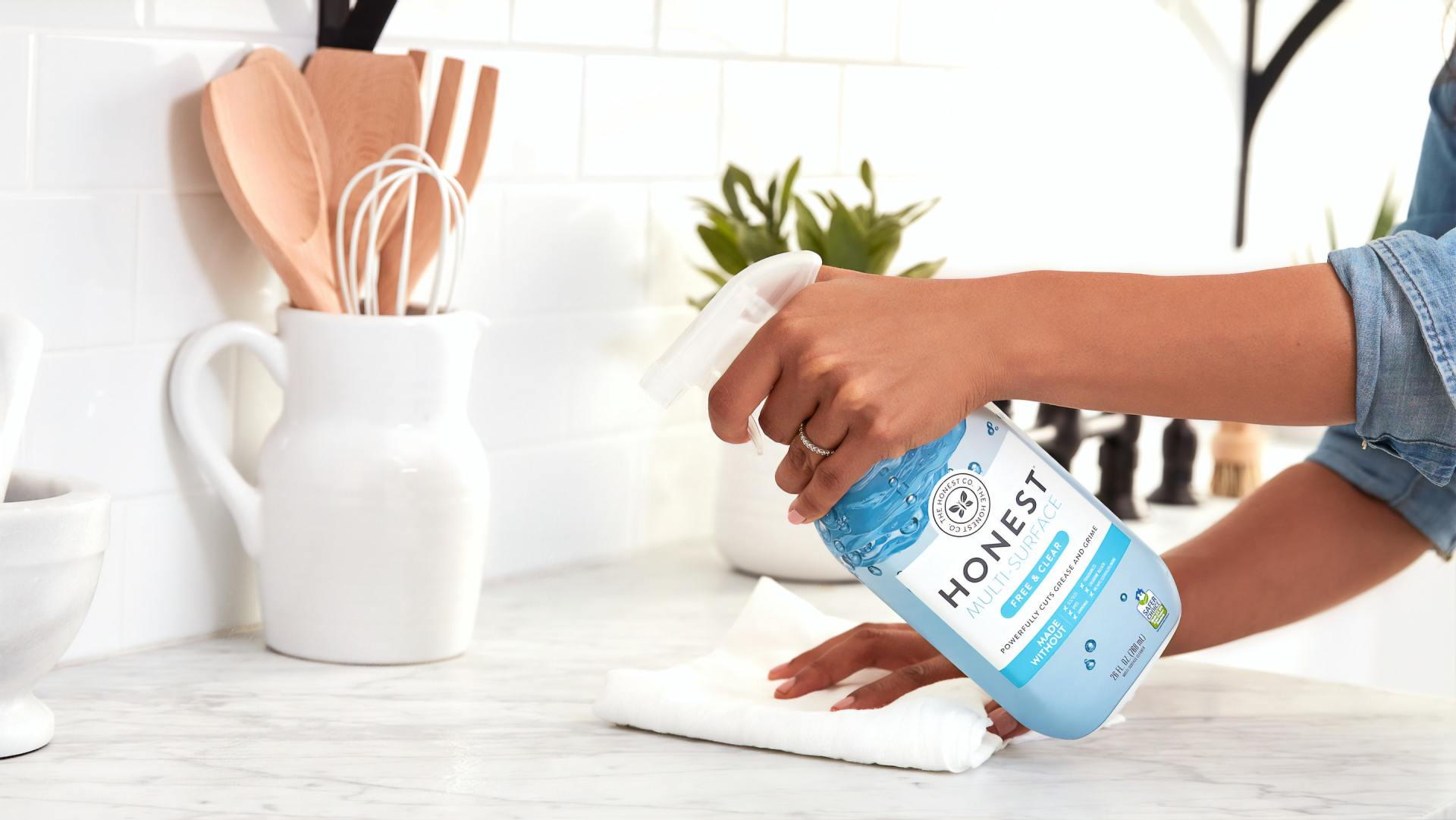
The good news is that you have the control, and there are many natural cleaning solutions that work as well as their chemical counterparts. You may think that you need the chemicals to have a clean home or clothes, but it’s not true. As you will see, there are many inexpensive options that will work for your home. Let’s Talk About Bacteria There is a lot of misinformation about bacteria swirling around. As a result, toxic cleaning products have become the norm. Not only are they not good for the environment, they are not good for our health. More importantly, the chemicals in these products are not necessary to have a clean home. - Bacteria require moisture to survive. - Bacteria that is present on any dry surface will die in three hours without moisture. - Clean and dry surfaces do not support the growth of bacteria. - Soap and water are sufficient to produce a clean surface. - There are a number of natural antibacterial ingredients that can be used as needed such as vinegar, alcohol, and essential oils. Keep These Handy in the Home The following are the key products you need to always have on hand. They should cover all your needs. Natural Soaps : Natural soap is made when fats and an alkalizing substance meet up in a process know as saponification. Natural soap should contain no artificial dyes, perfumes, or additives. It is beneficial for the skin and does not harm the environment. Many commercial detergents and soaps contain phosphates, which can be harmful to the environment. Synthetic chemicals and fragrances are added and may cause reactions or symptoms. We are all biochemically different, so it’s impossible for testing to truly determine how we might react.Looking for natural soaps is easier today, and there are many to be found in the health food store or online. Looking for an organic brand would be best. Castile soap is the cleanest. Dr Bronner’s makes soaps for all purposes. If you want to make your own soap: https://lovelygreens.com/natural-soapmaking-for-beginner. Vinegar : If disinfecting is needed, vinegar is the best option. Keep a jug of white vinegar handy for this purpose. It can be added to a mixture of soap and water for washing floors and countertops. Generally, it’s not needed. The best example for using vinegar would be on a plastic cutting board as bacteria can hide in crevices. Vinegar, mixed with baking soda or washing soda, makes a great scrub for scouring all surfaces. It’s helpful for cleaning sinks, tubs, windows, and all other surfaces. TIP: To give white vinegar a nice smell, do this simple step: Place the vinegar in a jar with a lid. Add the peels of lemons, limes, oranges, or grapefruits - whatever you have after you have peeled or juiced any of these fruits. For example, if you’re doing lemon juice and water as part of your morning ritual, toss the rind into the vinegar jar after you squeeze out the juice. Mix other peels in as you have them. The jar should be at least 1/4 to 1/3 full of peels. The vinegar should sit with the citrus peels for two weeks before using. Baking Soda : baking soda is a truly versatile product that can be used as a stain remover, air freshener, scrubbing agent, or cloth whitener. Mixed with an acid like vinegar or lemon juice, it can make a powerful cleanser. However, you will lose the scrubbing power and abrasiveness of the baking soda as it will be dissolved by the vinegar or lemon juice. Its cousin, washing soda, is another useful product that can be used in much the same way. Testing Baking Soda: It lasts a long time, but eventually it loses its power and benefits. A simple test is to mix some baking soda with some vinegar or lemon juice. It if fizzes, then it’s still good to go. If baking soda becomes hard like a rock, then it has also lost its benefits. TIP: Enzyme cleaners are the best for removing stains and odours, especially from pets. Essential Oils : They are the most concentrated form of a plant extract, and as a result, a little goes a long way. Many are antimicrobial, but their biggest role is in adding amazing fragrances to all your DIY cleaning products. They are the best replacement for air fresheners. Choose whichever you like, such as lavender, tea tree oil, peppermint, lime, lemon, orange, or grapefruit. doTERRA is a great source for high quality oils (www.doterra.com) Equipment : Microfibre dust cloth or mop, Spritzer bottle, Washcloth made from natural fibres (such as Mabu wood fibre cloth), Abrasive scrubbing sponge, Squeegee for windows and showers. The Importance of Avoiding Commercial Cleaning Products Commercial cleaning products contain many toxic synthetic chemicals. There’s an environmental consequence to the use of these products as they take many years to break down, so the pollution effect will be cumulative over time. Synthetic chemicals are also harmful to our personal health in two ways: 1. Direct Irritation: They can act as hormone disrupters or cause changes at the cellular and DNA level. Many are considered carcinogenic, meaning they can be a factor in causing cancer. They have also been linked to stimulating inflammation, a factor for all health conditions. 2. Condition of your immune system: Many chemicals produce free radicals which damage healthy cells. If a damaged cell is not repaired by an antioxidant, it will replicate as a damaged cell. This is considered a factor for the development of degenerative disease and the aging process. Since we never know what is affecting us on an individual level, it’s best to avoid exposure to as many toxins as possible Avoid These and More When Choosing Household Cleaners; Healthy Alternatives Most manufacturers of cleaning products do not disclose all ingredients, so you may not always know what you are using. Anything with any kind of warning label contains toxic chemicals, even if the ingredients are not listed. Here are just a few examples of synthetic chemicals used in cleaning products, along with some suggested alternatives. Synthetic Chemicals with Associated Health Issues, Plus Alternatives Ammonia : Bathroom cleaning products for fixtures, tubs and sinks, jewelry cleaners, and glass cleaners: Irritation of the respiratory tract. It is especially harmful for those with asthma and lung conditions. Alternative: Vodka, especially if looking for streak-free option. Toothpaste for polishing jewelry. Chlorine Bleach : Scouring powders, toilet bowl cleaners, mildew removers, laundry whiteners, household tap water. Respiratory issues and thyroid issues. Alternative: Borax or oxygen bleach for bleaching (try Biokleen) , w hite vinegar for cleaning toilets, counters, floors if needing more antibacterial action. Soap and water are generally enough for general cleaning. Butoxyethanol : Window, kitchen, and multipurpose cleaners. Sore throats, nercosis (death) of tissue, pulmonary edema, and liver and kidney damage. Alternatives: Vinegar and water can be used for window cleaners. Vodka can prevent streaks. ADBAC (Alkyl Dimethyl Benzyl Ammonium Chloride) Also known as Benzalkonium Chloride. Antibacterial liquid cleaning products and spray cleansers, hand wipes, hand creams, and anti-itch creams; also used as a pesticide as it is antimicrobial and kills bacteria and fungus. Development of drug-resistant bacteria. Use natural creams and add essential oils with antibacterial properties such as peppermint, lavender, tea tree oil, or citrus oils. Triclosan: Most dish soaps and antibacterial hand soaps. Development of drug-resistant bacteria strains. Alternatives: Natural organic soaps. Vinegar and alcohol are antimicrobial and can be mixed with water in a spritzer bottle. Phthalates: Scented soaps, toilet paper, air fresheners; Often labelled as “fragrance." Hormone disrupter. Alternatives: Natural organic soaps are best. For air fresheners, use a diffuser with essential oils – choose the one you like best or add to a spritzer bottle with some water. Perchloroethylene or “PERC” : Spot removers, dry-cleaning solutions and carpet and upholstery cleaners. Neurotoxin and possible carcinogen. Alternatives: Use a “wet cleaner” that uses a water-based technology. Another new alternative uses a carbon dioxide- (CO2) based technology. Many clothes that say “dry clean only” can actually be washed in the washing machine or washed by hand. Quarternary Ammonium Compounds, or “QUATS” : Fabric softener liquids and sheets, and household cleaners listed as “antibacterial.” Development of drug-resistant bacteria. Alternative: Vinegar can soften fabrics and reduce static when added to the rinse cycle. Sodium Hydroxide : Oven cleaners and drain openers. Burns. Sore throat that lasts for days. Alternatives: Many ovens are self-cleaning. A combination of baking soda, vinegar, and water can lift grease if needed. Other cleaning Alternatives: Cleaning Scrub: Mix 1/4 cup of baking soda with one tablespoon of natural liquid soap and one tablespoon of vinegar. Rinse with water after scrubbing the surface. This is great for surfaces in bathrooms and kitchens. Floors and Counters: Use natural organic liquid soap with essential oils of choice. Citrus essential oils provide a nice clean aroma. Use a metal scraper on the floor or counter to lift anything that may be stuck on the surface. Sweep the floor or wipe the counter. If needed, then wash with baking soda or washing soda mixed with sea salt and a little water and use as a scrub. Oven Cleaner: Turn the oven up to 500 degrees F and leave on for 1 to 2 hours if there is baked-on greasy residue that needs to burn off. Place a dish of water in the oven on high heat and let it steam the inside of the oven. Let the oven cool and scrub with equal parts of baking soda, vinegar, and sea salt. Mold and Mildew: For every cup of water, mix in 1/8 to 1/4 tsp of lavender and 1/8 to 1/4 tsp of grapefruit seed essential oils. Tea tree oil can also be used. Spray the surface where mold is occurring and let it sit to break it up. Spray to wipe down as needed. Dusting: A damp cloth can be used but be sure to dry any wood surfaces. A microfiber cloth is the best for dusting as it grabs the dust and holds it to the cloth. Sink Cleanser: Sprinkle baking soda in the sink along with several drops of an essential oil such as lavender, lemon, lime, orange, rosemary, or grapefruit. Use a spritzer bottle to squirt vinegar on the baking soda and let it bubble. Scrub and rinse with hot water. Carpet Cleaning: Rent a steam cleaning machine or hire a professional steam cleaning company and ask them not to use any chemicals. To clean a spot or area of high traffic (which always gets dirtier than other areas), mix 3 cups of water, 3/4 of a cup of natural liquid soap (vegetable-based), and 10 drops of essential oil such as grapefruit or lavender. Sponge and scrub the area, let it dry, and then vacuum. Spot Remover: Soak in washing soda that has been dissolved in water. Ecover makes an environmentally-friendly spot remover. Drain Cleaners: Mix 1/2 cup of baking soda or washing soda and 1/2 cup of vinegar to help break up grease in the drain. Doing this weekly can help prevent clogs. This can also be used with a clog, but a home drain snake will be needed (available on Amazon). Snaking the drain does not require a plumber unless the clog is deep in the pipes, which is not usually the case. A home drain snake does not require any pipes to be dismantled – they fit in the drain in the sink. Window cleaner: Mix 1 1/2 cups of water, 1/2 cup of vinegar and 1/2 cup of 80-proof vodka together and put in a spritzer bottle. Toilet cleaner: Add 1/2 cup of baking soda to the toilet and scrub. Or add 1 cup of vinegar and let it sit overnight and then scrub. Lime deposits: Mix 2 parts of sea salt with 1-part vinegar and use on the surfaces that have lime buildup. Healthy Solutions for Washing and Drying Clothes There are natural laundry soaps that you can buy. Look at your local health store for options. Soap nuts - a dried fruit of the Chinese soapberry tree. Put them in a cotton bag with a draw string and add to the wash. They’re reusable. Look for them online or at the health food store. Washing Soda - Helps remove spots and can be added to the washing machine. It’s made from sodium carbonate, as opposed to sodium bicarbonate, which is baking soda. It can be purchased in the store. This can also be made from baking soda. Place two cups of baking soda on a clean baking sheet. Bake for an hour at 400 degrees F. Stir and then bake for another hour. Let cool and store in an airtight container. Natural Fabric Softener - Add 1/2 cup of vinegar to the rinse cycle to soften the fabric or just toss it into the dryer to remove static. The clothes will not smell like vinegar. Hanging clothes made from synthetic fibres to dry can reduce the static of the remaining clothes in the dryer. Wool dryer balls are another option and are available online. You may need to use several depending on the amount of clothes in the dryer. Dry Cleaning Solution - Dry cleaning involves the use of the chemical solvent perchloroethylene or “PERC.” It is known as a neurotoxin and is possibly carcinogenic. Symptoms of exposure can include dizziness, loss of co-ordination, migraines and asthma attacks. To avoid the use of toxic chemicals like PERC, take clothes that say “dry clean only” to a “wet cleaner.” They use a water-based technology instead of chemical solvents. Liquid carbon dioxide has been recently approved as a more environmentally-friendly option. Resources: Environmental Working Group has a complete guide to 2500 products that have been rated “safe.” • Click here to learn more: Environmental Working Group’s Guide to Healthy Cleaning Products ( https://www.ewg.org/guides/cleaners/ ) For more ideas for DIY cleaning products, check out these books: • Green Interior Design by Lori Dennis • Super Natural Home by Beth Greer • The Naturally Clean Home By Karyn Siegel-Maier
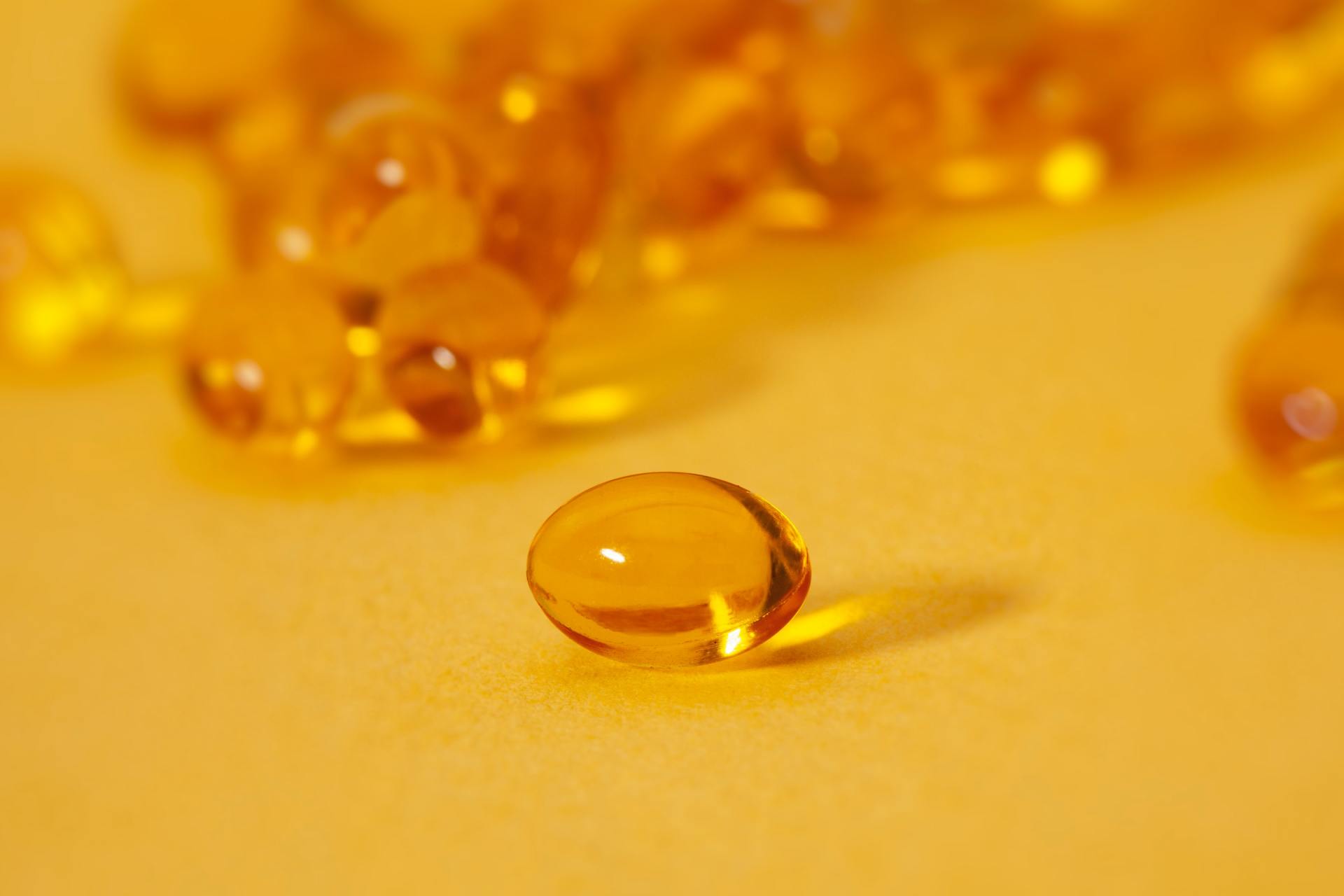
But you are a savvy health-conscious consumer. You want to make sure you're making wise choices with your health (and money). Here are eight expert tips for you when choosing supplements: Tip #1: If you’re in a country that licenses or pre-approves supplements (like I am in Canada), then make sure you’re getting the real thing, and not some illegally imported bootleg of a product. Why? This is your health, and it’s important enough to make sure you’re getting a product that at least meets the minimum requirements in your country. There are always recalls and safety alerts issued for contaminated supplements, or products that don’t even contain what they say they do. Don't get me wrong! This health authority approval is not a perfect gauge of quality, but it does have some benefits worth considering. How? In Canada, you would check its approval by making sure it has an 8-digit “NPN” number on the front label. This number means that the company meets the required standards (including quality standards and truthfulness of their labelling). And, if something does go wrong, there is someone who you can complain to (the company or Health Canada's MedEffect program) and who is responsible (the company). If you’re not in a country that pre-approves supplements, make sure what you buy meets the regulations of your country. If you have to look up the company or product online or call them, please do it – don’t be afraid to ask the hard questions before you use any health products. If the only address or phone number is not in your country, then steer clear, because if something goes wrong it’s possible that nothing can be done about it. Tip #2: Read (and heed) the warnings, cautions and contraindications. Why? You don't want a reaction, right? How? Check the label for things like: • To consult a healthcare practitioner if you're pregnant or breastfeeding, or • If you have certain medical conditions (e.g. high blood pressure, auto-immune disease, diabetes, ulcers, etc.), or • If you are taking certain medications (e.g. like blood thinners or immune suppressants, etc.) or • If you are taking other supplements, or • If you shouldn't take it for more than a certain length of time (e.g. 6 or 8 weeks). Tip #3: Look at the medicinal and non-medicinal ingredients for things you might be allergic to, or have reacted to in the past. Why? Just as you would do this with foods, do this with supplements. Again, you don't want a reaction, right? And even if you've used a product before, check it each time you buy it. Manufacturers may make changes to ingredients from time to time. How? Any credible supplement company will list every active ingredient, as well as the inactive ingredients. The print may be small, but worthwhile. Info not there? Give them a call. Most reputable companies have a toll-free number on the bottle, or at the very least their website address. PRO TIP: You can look up any Canadian NPN number on Health Canada's database here: https://health-products.canada.ca/lnhpd-bdpsnh/index-eng.jsp Tip #4: Read the labelled “Indications” or “Uses” (a.k.a. How can this product help me?). Why? Bullshit alert. What is the company claiming that their product can help you with? Beware of people who tell you that this product can help you beyond what’s on the label. If they heard about it, or found it in a book, that may or may not be reliable information. How? Ask for scientific studies, or look it up on credible websites that don’t make money from selling supplements (such as Examine, or the NIH Office of Dietary Supplements). Tip #5: What “dose forms” can you get (i.e. tablets, capsules, powder, liquid, etc.)? Why? I personally prefer capsules. This is because tablets and caplets are not very easy to absorb because they’re compacted into a hard rock-like form that sometimes doesn't break down in your digestive system. Powders and liquids are easier to swallow and to absorb, but they can go “off” quicker because every time you open the bottle, you’re exposing all of the contents to the oxygen, moisture and microbes in the air. They can also be difficult to get accurate dosing (especially if they need to be shaken well). Capsules (my preferred form) are powders placed into tiny dissolvable...capsules. You can get vegan capsules or gelatin capsules. They’re not compressed, so they're more easily absorbed (they're still loose powder), and the capsule itself provides an extra layer of protection from oxidation and contamination from the air. How? The front label should mention this loud and clear. Along with how many are in each bottle. Tip #6: How much/many do you need for a recommended dose? Why? This is important to keep in mind because you may not want to take several capsules per day in order to get the recommended dose. Plus, many (but not all) bottles contain a 30 day supply. This helps you see how much you need to take, as well as the real cost per serving/dose. How? Read carefully. Is the label information based on one capsule, two...maybe six? The amounts of each nutrient listed on the label may be based on each dose, or the entire daily dose. For example, if a label recommends you take 2 capsules per day, the active ingredient amounts listed may be the total amount in those 2 capsules, unless it says "per 1 capsule". Yes, for this one you do need to read carefully. Tip #7: Check the storage requirements and expiry date. Why? These two go hand-in-hand because the expiry date is based on how that supplement degrades over time at certain temperatures, humidity and light exposure. How? If the bottle says that it should be refrigerated, make sure it’s in the fridge at the store, or shipped in a refrigerated truck. If it says to refrigerate after opening, then make sure once that seal is broken, you keep it in your fridge. If it says to keep out of sunlight, make sure the store/shipping company is doing that, and that you do that too. This is sometimes why supplements are in dark or opaque bottles – to prevent sunlight from degrading it before the expiry date. And, of course, I wouldn't recommend taking supplements past their expiry date. After this date the manufacturer does not guarantee the quality or dose of the product. Tip #8: If you’re trying a new supplement for the first time, start slow. Why? Keep an eye out for both positive and negative reactions, and act accordingly. How? You don’t have to dive right into a full daily dose on day 1. Try starting with half-doses, or skipping days for a week or two before ramping up to the recommended dose. I hope these eight tips serve you well!
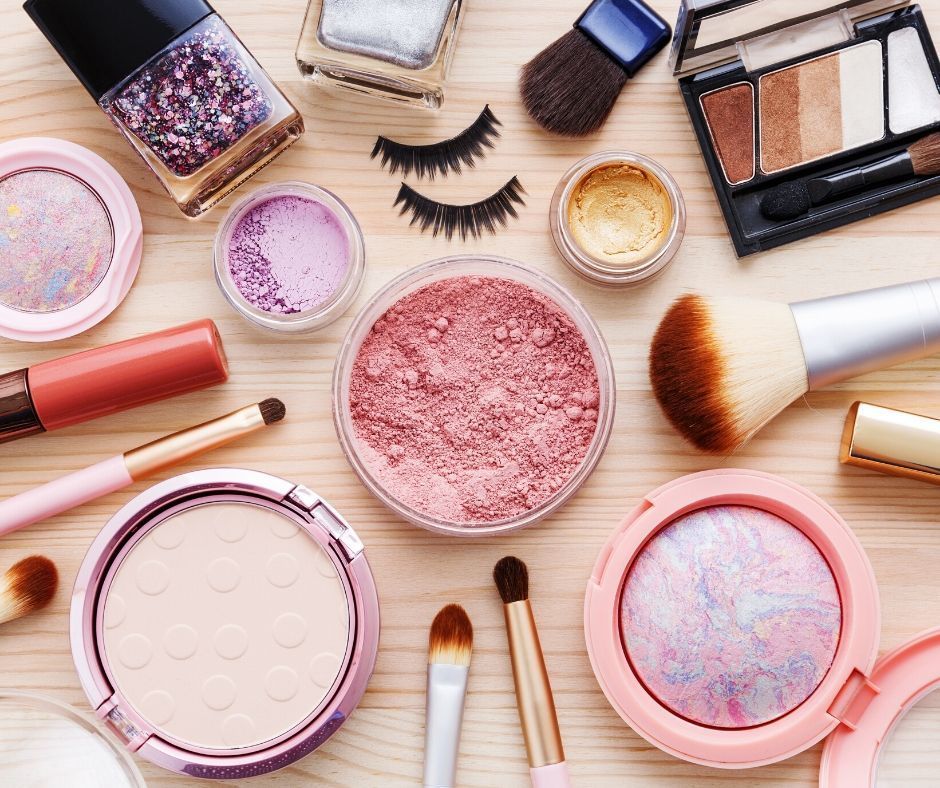
What types of products should you avoid? Any products with synthetic chemicals. Even though these chemicals have been approved for use in products, there has been little testing and studies done on the long-term effects. Buying clean products is just one more way to lessen the toxic load on the body. What beauty products should be clean? Make-up, skin lotions, shampoos, conditioners, soaps, sunscreens, and cleansers. Anything that touches our skin should be as chemical free as possible. What chemicals should you be looking to avoid? Read the labels for shampoo, conditioner, moisturizer, cosmetics, and other personal care products so that you can avoid harmful chemicals. Here are some of the most common ones found in many different types of products. 1. Phthalates: Used in many products and often not listed on the label. They are potential hormone disrupters and may damage the skin, liver, and kidneys. They are linked to birth defects and cancer. 2. Benzoyl Peroxide: Used in acne products, it may irritate the skin, eyes, and nose. It may cause DNA damage and promote tumours. 3. DEA (diethanolamine), MEA (monethanolamine), TEA (triethanolamine): Used as foaming agents and may accumulate in the brain and body. They may also irritate the skin and the eyes. 4. Dioxin: This is not listed on the ingredient list. Sodium laureth sulfate, triclosan, emulsifiers, and ethoxylated cleansers may contain dioxin, a known carcinogen which may also affect the nervous and immune system. 5. DMDM Hydantoin and Urea: Preservatives that may cause joint pain, skin reactions, headaches, depression, chronic fatigue, dizziness, and possible carcinogens. 6. Artificial colours (FD and C Colour and Pigments): Made from coal tar, they may be skin irritants and decrease oxygen. They may also be a carcinogen. 7. Parabens: Used as preservatives. They may be hormone disrupters possibly linked to breast cancer, female hormonal issues, and male sterility. 8. Polyethylene Glycol: Used in baby products, sunscreens, and many personal care products. This contains dioxin, which is a by-product from its production. 9. Butylene Glycol and Propylene Glycol: Extremely toxic and found in medications, food, and skin care products. It serves as a base for other ingredients in topical skin products. It’s been linked to skin, brain, and kidney abnormalities. 10. Sodium Lauryl Sulfate and Sodium Laureth Sulfate: Found in 90% of cosmetics and skin care products that need a foaming agent. They are linked to skin irritation, eye damage, depression, and breathing issues. 11. Benzphenone, Ethoxycinnamate, and PABA: These are commonly used in sunscreens and are known free-radical generators which may lead to DNA damage. 12. Triclosan: Antibacterial that may be a possible endocrine disrupter. When you read a list like this, it’s hard not to be overwhelmed. These are just some of the chemicals you may want to avoid. It’s a lot easier to look for clean products than to worry about every ingredient you may not be familiar with. Fortunately, the Environmental Working Group has done this work for you. They have developed a certification process for companies with clean ingredients, and they can verify that they are the best quality. Look for the EWG Verified logo on products. Or you can go to the EWG website and look for products that are verified. The EWG does more than just list the best products. They list the products that have been verified and provide details of their level of safety in addition to any concerns they may have about any of the ingredients in a given product. Probiotics and Prebiotics in Beauty Products: Currently, beneficial bacteria are being added to shampoos, soaps, and skin care products. The skin is a rich source of beneficial bacteria which aids the health of the skin and protects us. Using antibacterial products or items that contain harsh chemicals on the skin disrupts its natural balance. It makes sense then to have products that contain beneficial bacteria to help soothe and support the health of the skin. Look for these in your local health food store or online. Prebiotics for the skin, which many product manufacturers are adding, also help restore our own natural bacteria for healthier skin. Many essential oils are prebiotic.
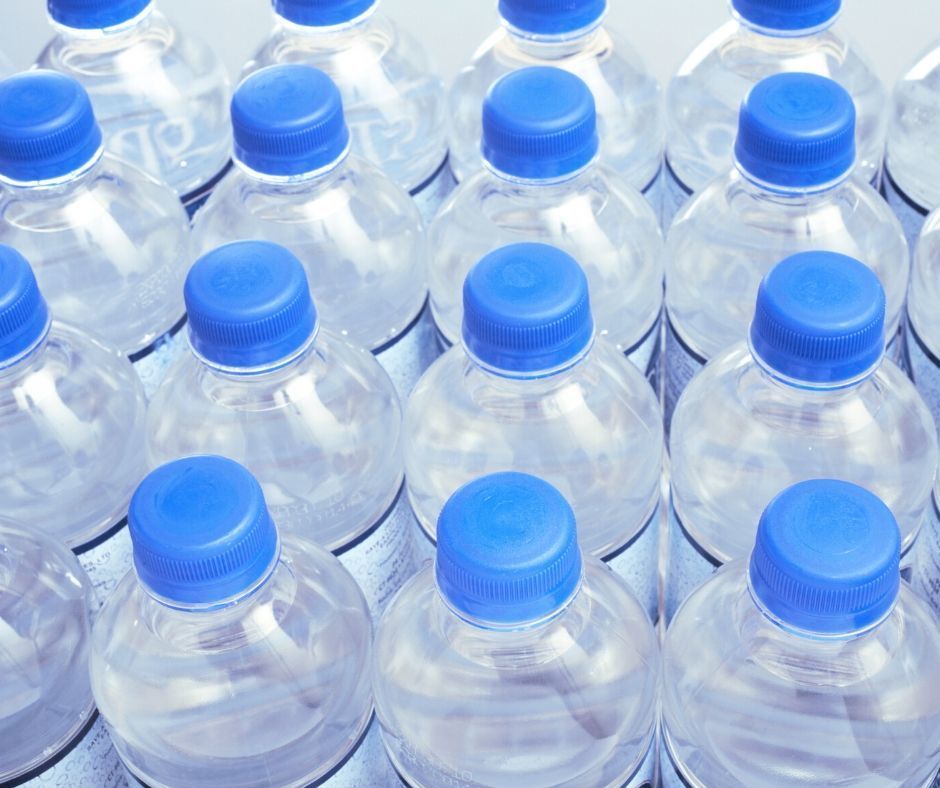
The good news is that there are many options for using less plastic. This requires establishing new habits, which is not difficult, and in some cases will even save you money. Let’s start talking about why we should use less plastic. Issues with Plastic: · Plastic is made from petroleum and other petrochemicals which consumes vast amounts of natural resources. · It contains harmful chemicals such as Bisphenol A (BPA) which was added to the process to make plastic soft, so it could bend and be formed into different items like containers, shopping bags, water bottles, baggies, and plastic wrap. BPA was originally designed as a synthetic estrogen for women. However, it was discovered it made plastic soft. Now we are just getting trace amounts in our food and beverages and from our clothes if they are made from polyester. · It’s not biodegradable. What does that mean? It doesn’t easily break down into single molecules and make its way back into the earth. How long does it take to break down? It can take less than a year or up to 50 years. It depends on the type and quality of the plastic. It also depends on where it’s residing. Plastic in warm ocean water degrades faster than plastic in landfill. · When it degrades, it’s not producing any useful molecules nature can use. It’s actually breaking down into toxic chemicals and polluting the earth more than when it was a plastic. · Plastic pollution in the oceans, beaches, and land is a big problem. The most common items found are straws, plastic wrap, bottles, and bags – with many of these showing up on beaches or seen floating in the water. They are even showing up in places where people don’t go. · Plastic bags, straws, and other types of soft plastics like these are harmful to wildlife. How to Use Less Plastic: 1. Avoid buying items packaged in plastic. This is difficult, but the more you think about it, the more options you will find. Buy fruits and vegetables as single items, not packaged. Look for items in glass jars. Purchase dessert items at bakeries that still use cardboard boxes or paper bags. Ask the butcher, if your grocery store still has a butcher department, if he can package your meat or fish in the thick waxed paper they previously used. Many butchers still use it when you buy items in the display case as opposed to the refrigerator and freezer bunker or case. 2. Look for detergents and other products in boxes. They still exist. 3. Use cloth shopping bags or support stores that have switched to plastic corn bags. However, it should be noted that if these plastic bags end up in the landfill, they don’t necessarily degrade faster than the plastic made from petrochemicals. Cloth is best. Just keep these bags in the trunk of your car so they are always handy. You can also purchase eco produce bags (sometimes found at your local grocery store). Take these bags with you when you purchase your produce and use these instead of the plastic bags provided. 4. Wear clothing made of natural materials such as cotton, wool, or silk instead of synthetic materials such as polyester. When washing synthetic clothing, fibres flake off, and these tiny pieces of microplastic are showing up in our water systems. Even clothing that is a mixture of natural fabric and polyester is better than 100% polyester. Polyester also doesn’t breathe, and this means body odour will be more prevalent from sweating. 5. Don’t throw old electronics in the trash to get rid of them. Take them to a facility that will recycle them or give them to a person who repairs electronics as the parts may be useful. 6. Be the one to reuse the plastic. This is called upcycling. If you are creative and crafty, there are many things you can do with plastic bottles and bags. Just google “upcycling plastic” for sites that have ideas and instructions. Lowering Single-Use Plastic: Plastic containers have the advantage that they can be used over and over again. They last for years. From a pollution perspective, this is better. While the production of the plastic is not environmentally-friendly, we can at least produce less when it’s reusable. However, single-use plastic, where we use it once and throw it away, is one of the biggest concerns. Here are some easy suggestions to reduce single-use plastic: Reusable Plastic Wrap. There is now reusable wrap available, usually made from beeswax and other biodegradable ingredients, that can be pressed around the jar or food that you are storing. These wraps can be reused up to 150 times and can be washed. They are suitable for wrapping lunches and storing foods in the refrigerator. They can also be used for storage in the freezer for up to 30 days. They are breathable, which means air can pass through them. This makes the food less prone to mold. Plastic does not breathe. · Etee: https://www.shopetee.com/pages/reusable-food-wrap-offer · Abeego: https://canada.abeego.com/ Don’t Use Plastic Straws. They’re not needed. And if you do want to use one, purchase a stainless steel or glass straw. It can be washed and used over and over again indefinitely. Purchase a Stainless Steel or Glass Water Bottle. Fill it with good quality water. If you like bottled spring water, get a water cooler for your home from a company that has glass jugs. Fill your reusable bottle at home. It’s not only good for the environment, it will save you money. Bring a Mug to Work. By doing this, you won’t rely on plastic cups for coffee or water. Use a mug with a lid so when you get your favourite coffee to go, just hand your mug to the clerk to fill. Bring Your Own Container for Takeout and Leftovers When You Eat Out. Even if you’re ordering takeout – pick it up and ask them to put it in your containers when you arrive. This may seem like an awkward thing to do, but you won’t be the only one asking. Avoid Using Disposable Plastic Plates, Cups, and Cutlery. There may be occasions when you have to purchase disposable cutlery and plates. Look for ones that are made from recycled paper or biodegradable plastic. However, try to use real plates and cutlery. Don’t be afraid to ask people to bring their own plates and cutlery to the family picnic. Stop Using Plastic Bags for Storage. It’s better to store food in harder plastic containers than use plastic bags. There are also glass and stainless-steel containers that can be used for storing lunches or food in the refrigerator. The glass containers usually have plastic lids to go with them but that is still less plastic. Using less plastic will send a signal to manufacturers that they need to have better environmental options for their products. Don’t be afraid to contact companies who make products that you like. Let them know that you want them to use less plastic. A Good News Story: 4Ocean is a company that recycles plastic retrieved from the ocean and turns it into bracelets. It was started by two surfers who were upset about surfing amongst the garbage. It is quite a success story and in some parts of the world has helped revive local economies. Watch the video to learn more. This is just one idea, one solution. Humans can be very creative, and we can solve the environmental and health problems that have been created by pollution and toxic chemicals.

There may not be an obvious link between sleep deprivation and your weight, but more and more research is showing just how important sleep is for your mood, mental performance, overall health and wellness, and especially when it comes to maintaining a healthy weight. Many studies show that people who have a short sleep duration simply weigh more. And, in fact, as the levels of chronic (long-term) sleep deprivation have increased over the past 50 years, so have the growing epidemics of being overweight or obese. And many studies now agree that lack of sleep is an “independent” risk factor (i.e. a direct risk) for weight gain and obesity. Especially for women. One large analysis of 45 studies which included over 600,000 people says, “studies from around the world show a consistent increased risk of obesity amongst short sleepers in children and adults.” The increased risks were 89% for children and 55% for adults. The overall data in that study suggests that a reduction in one hour of sleep per day would be associated with about 1.4 kg in additional weight. Right now, 40% of American adults say that they get less than 7 hours of sleep per night, and 7 hours is the minimum recommended nightly sleep, with 9 being the maximum. HOW SLEEP DEPRIVATION LEADS TO WEIGHT GAIN Overall, there are two main ways (with two factors each) that we think that lack of sleep contributes to weight gain and obesity. First, it increases calorie intake in two ways. ● It allows more time available to eat; and ● It messes with your hunger hormones. Second, it decreases your ability to burn off calories in two ways. ● It can slow your metabolism; and ● It can cause fatigue and, therefore, reduced physical activity. Let’s talk about all four of these factors. LACK OF SLEEP INCREASES TIME AVAILABLE TO EAT Some researchers suggest that the longer the time you’re awake, the more opportunity you have to eat, or more specifically, to snack. In fact, some studies have shown that these tend to be nighttime snacks. And guess what many sleep-deprived people tend to snack on at night? You guessed it...high-fat, sometimes high-carb, and less protein and fibre snacks. Which, of course, can lead to weight gain. And, at least one study shows that eating at night increases the time it takes (healthy people) to fall asleep. Especially for women. So there is a bit of a “vicious cycle” in play here. LACK OF SLEEP MESSES WITH YOUR HUNGER HORMONES Many people who sleep less tend to eat more calories throughout the day. And not only due to increased time available for snacking, but also because of how lack of sleep can mess with the hormones that control both hunger and appetite. How does this happen? This is a “double-whammy” because some studies show that lack of sleep not only increases the stomach’s hunger hormone “ghrelin” (making you hungrier), but it also decreases the fat tissue’s fullness hormone “leptin” (making you feel less full). These changes can clearly lead to more eating, and eventually weight gain or even obesity. It’s possible that this is a natural mechanism that our body uses to make sure we get enough food for longer waking times. But this doesn’t always serve us well, as it tends to make us “overshoot” our energy needs and take in a bit more than we actually need. LACK OF SLEEP MAY SLOW YOUR METABOLISM Research is just emerging on this topic, but it seems to show that sleep deprivation can lower your “energy expenditure” and body temperature? This means that your body may naturally burn less fuel at rest during the days when you’re sleep deprived. When you burn less, you store more. LACK OF SLEEP REDUCES EXERCISE You know how tired you feel after not getting enough sleep? This is the fourth way that lack of sleep affects weight. By increasing fatigue, sleep deprivation can reduce the motivation to exercise. And when you’re burning less fuel at rest (slower metabolism), and less likely to exercise, you’re at risk of gaining weight. WANT TO KNOW THE GREAT NEWS? Lack of sleep is considered a “modifiable risk factor”. This means that, although it increases our risk for obesity, we have some power over it. How well you sleep and how much sleep you get is something that you can improve by putting into place some tips and making them regular habits. TIPS FOR GETTING BETTER SLEEP 1 - Make sleep a priority. Let’s admit that, for a lot of us, the lack of sleep we’re getting is often because we simply give other activities priority. Making something a priority will help you achieve it. 2 - Be consistent with your sleeping times. Your body loves routine, and having a consistent bedtime can actually train your brain, your body’s clock (circadian rhythm), and sleep hormones to follow suit. 3 - Eliminate stimulants after noon. Ideally, you won’t expose your body to chemical stimulation for the whole afternoon and evening. This includes caffeine (coffee, black and green teas, chocolate) and nicotine (cigarettes). 4 - Get some exercise and sunshine during the day. Of course exercise and sunshine have many health benefits. They also tell your brain that it’s daytime, so it can help to set your body’s clock. Tip: Be sure to finish exercise at least three hours before bedtime, as it may stimulate some people and keep them awake. 5 - Stop eating and drinking a couple of hours before bed By cutting out your bedtime snack you will eat fewer calories, and you may even have a better night’s sleep and wake up more alert. Also, by not drinking fluids a few hours before bed you’ll reduce the need to go the bathroom in the middle of the night. 6 - Lower your lights when the sun goes down If your brain thinks it’s daytime it will not make the sleep hormone melatonin so it can stay awake. So, having bright white (or blue-ish) lights can trick your brain into thinking that it’s daytime. So, you can dim your lights, buy amber/red light bulbs and/or blue-blocker glasses, turn off electronics (or at least use the f.lux or twilight apps), and if you do need to go to the bathroom during the night, don’t turn on the light. 7 - Create a relaxing pre-bed routine. Choose something that you enjoy and will help to relax your body and mind and prepare it for a good night’s sleep, whether it be a warm bath, or reading a book. And when you start feeling drowsy, just go to bed. 8 - Keep your bedroom comfortable Having a room that is too hot, bright, or noisy can keep you from having a good night’s sleep. Ideally your room will be cool, completely dark, and either silent or with white noise. 9 - Get light as soon as you wake up Turn on the lights or open the blinds as soon as you wake. This tells your brain to wake up and start the day. REFERENCES Cappuccio FP, Taggart FM, Kandala N-B, et al. Meta-Analysis of Short Sleep Duration and Obesity in Children and Adults. Sleep. 2008;31(5):619-626. LINK: https://www.ncbi.nlm.nih.gov/pmc/articles/PMC2398753/ Crispim CA, Zimberg IZ, dos Reis BG, Diniz RM, Tufik S, de Mello MT. Relationship between food intake and sleep pattern in healthy individuals. J Clin Sleep Med. 2011 Dec 15;7(6):659-64. doi: 10.5664/jcsm.1476. LINK: https://www.ncbi.nlm.nih.gov/pmc/articles/PMC3227713/ Dashti HS, Scheer FA, Jacques PF, Lamon-Fava S, Ordovás JM. Short sleep duration and dietary intake: epidemiologic evidence, mechanisms, and health implications. Adv Nutr. 2015 Nov 13;6(6):648-59. doi: 10.3945/an.115.008623. Print 2015 Nov. LINK: https://www.ncbi.nlm.nih.gov/pmc/articles/PMC4642416/ Di Milia L, Vandelanotte C, Duncan MJ. The association between short sleep and obesity after controlling for demographic, lifestyle, work and health related factors. Sleep Med. 2013 Apr;14(4):319-23. doi: 10.1016/j.sleep.2012.12.007. Epub 2013 Feb 16. LINK: https://www.ncbi.nlm.nih.gov/pubmed/23419528 Lucassen EA, Rother KI, Cizza G. Interacting epidemics? Sleep curtailment, insulin resistance, and obesity. Ann N Y Acad Sci. 2012 Aug;1264:110-34. doi: 10.1111/j.1749-6632.2012.06655.x. Epub 2012 Jul 24. LINK: https://www.ncbi.nlm.nih.gov/pmc/articles/PMC3418485/ Markwald RR, Melanson EL, Smith MR, et al. Impact of insufficient sleep on total daily energy expenditure, food intake, and weight gain. Proceedings of the National Academy of Sciences of the United States of America. 2013;110(14):5695-5700. doi:10.1073/pnas.1216951110. LINK: https://www.ncbi.nlm.nih.gov/pmc/articles/PMC3619301/ McHill AW, Wright KP Jr. Role of sleep and circadian disruption on energy expenditure and in metabolic predisposition to human obesity and metabolic disease. Obes Rev. 2017 Feb;18 Suppl 1:15-24. doi: 10.1111/obr.12503. LINK: https://www.ncbi.nlm.nih.gov/pubmed/28164449 Patel SR, Hu FB. Short sleep duration and weight gain: a systematic review. Obesity (Silver Spring). 2008 Mar;16(3):643-53. doi: 10.1038/oby.2007.118. Epub 2008 Jan 17. LINK: http://onlinelibrary.wiley.com/doi/10.1038/oby.2007.118/full Shlisky JD, Hartman TJ, Kris-Etherton PM, Rogers CJ, Sharkey NA, Nickols-Richardson SM. Partial sleep deprivation and energy balance in adults: an emerging issue for consideration by dietetics practitioners. J Acad Nutr Diet. 2012 Nov;112(11):1785-97. doi: 10.1016/j.jand.2012.07.032. LINK: https://www.ncbi.nlm.nih.gov/pubmed/23102177/ Taheri S, Lin L, Austin D, Young T, Mignot E. Short sleep duration is associated with reduced leptin, elevated ghrelin, and increased body mass index. PLoS Med. 2004 Dec;1(3):e62. Epub 2004 Dec 7. LINK: https://www.ncbi.nlm.nih.gov/pmc/articles/PMC535701/
